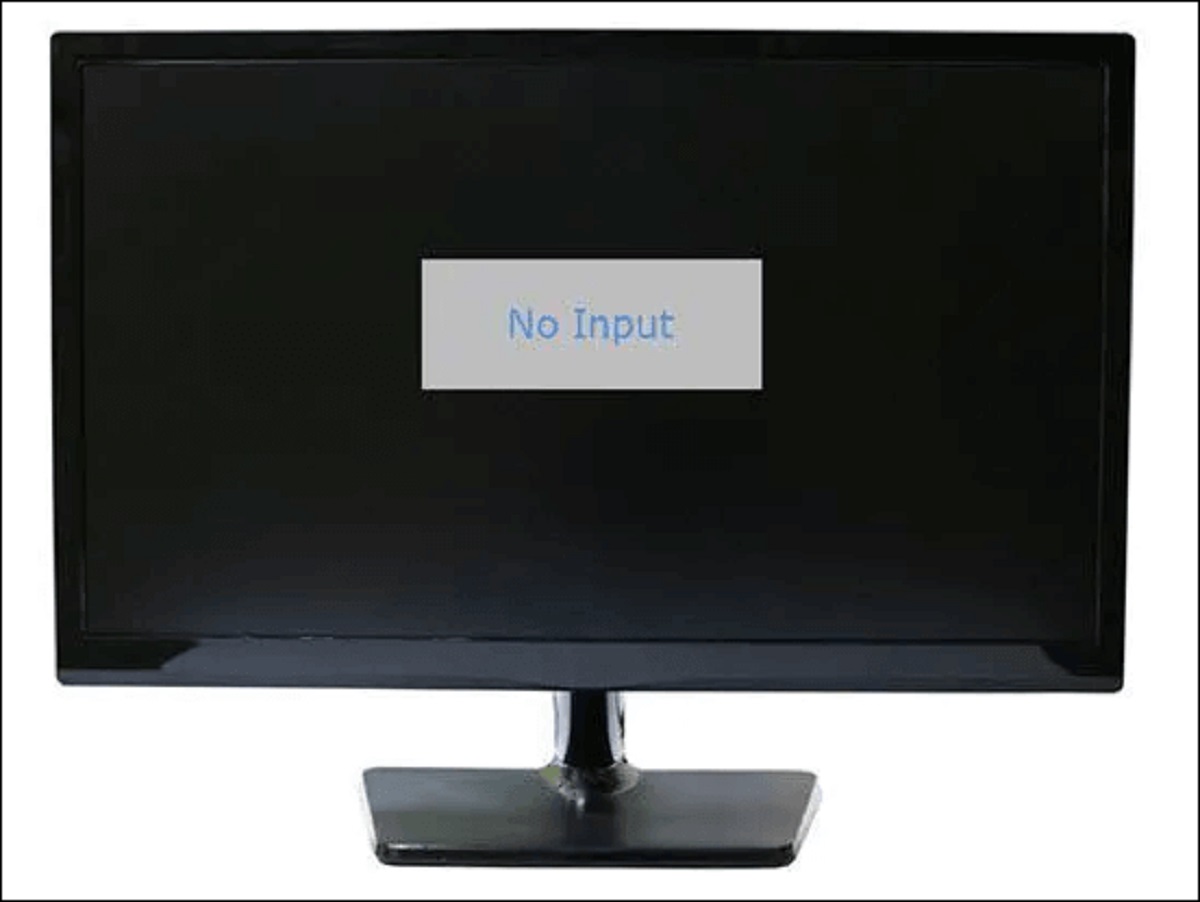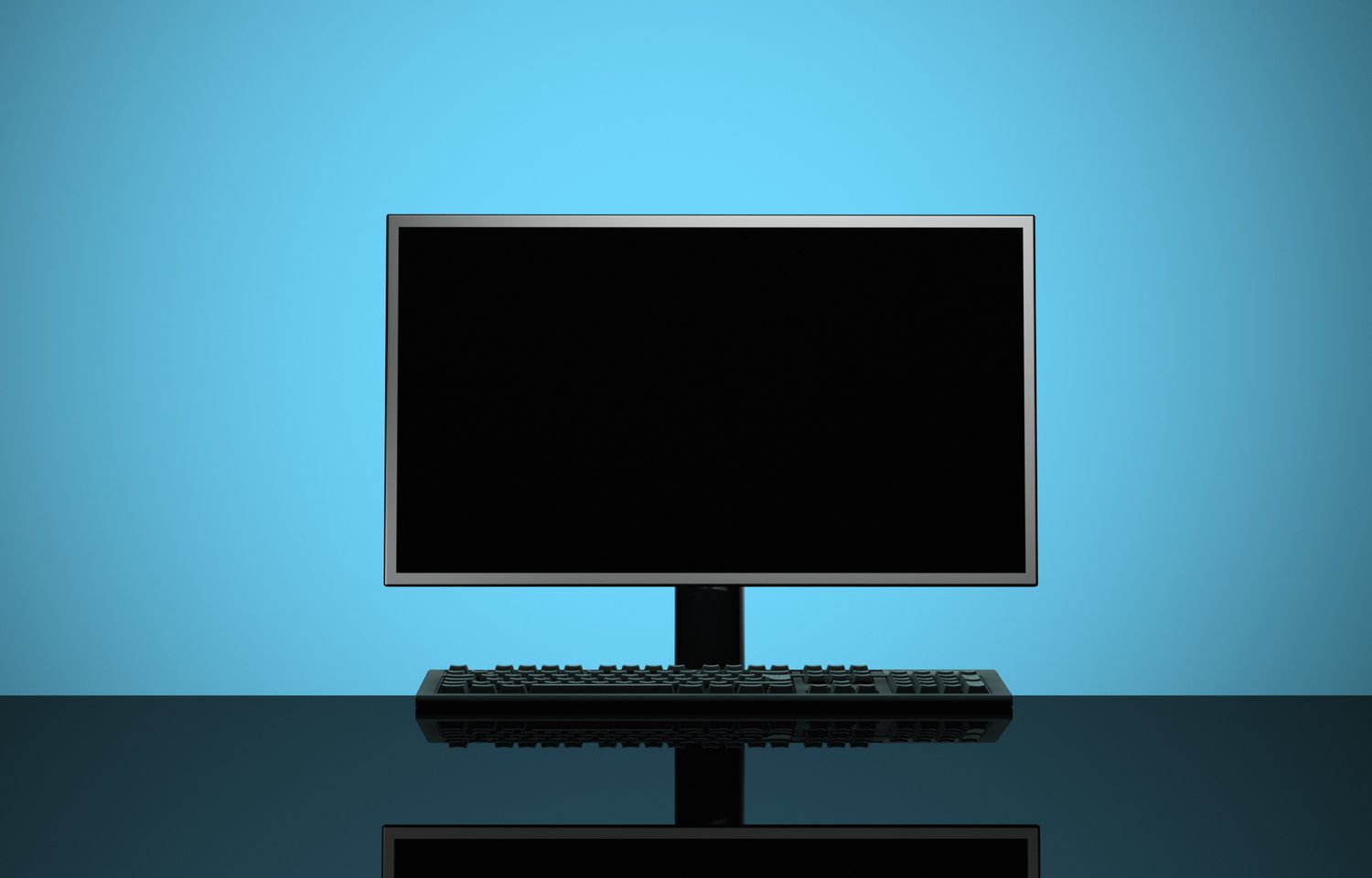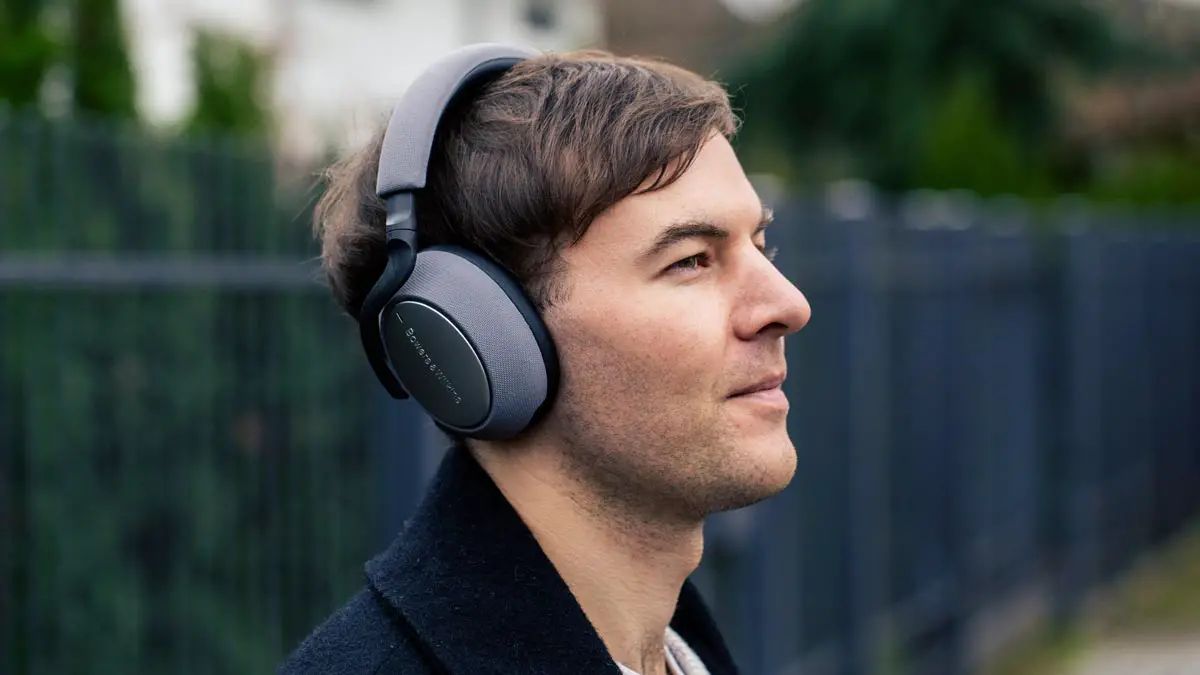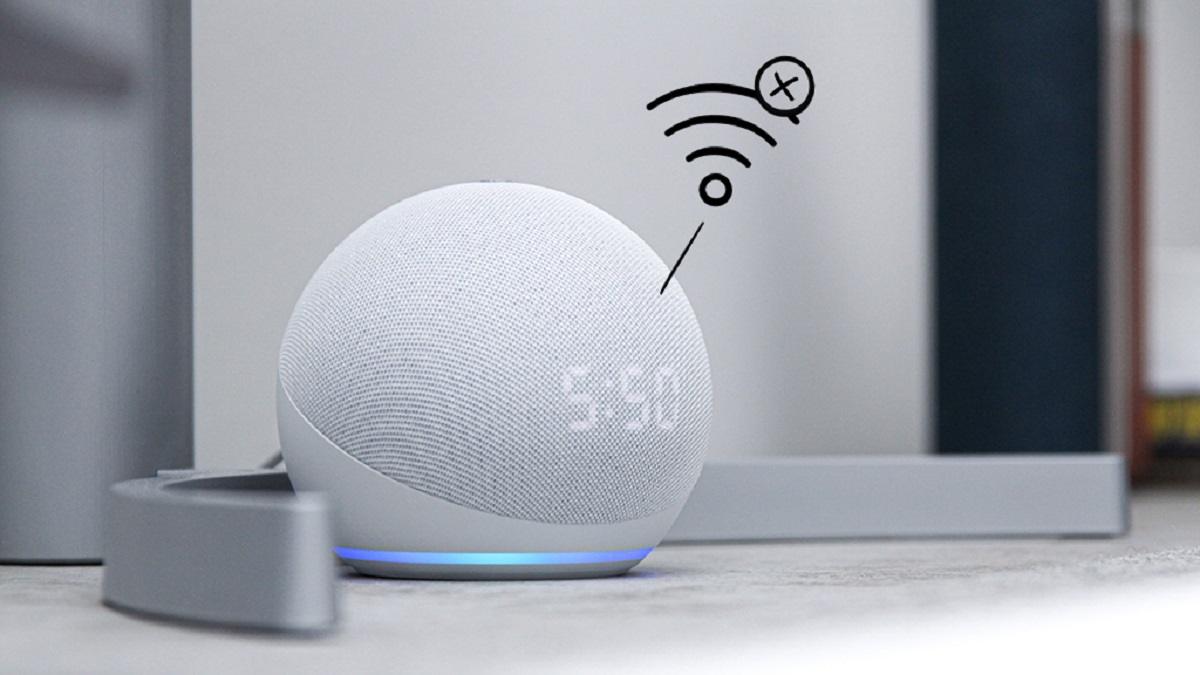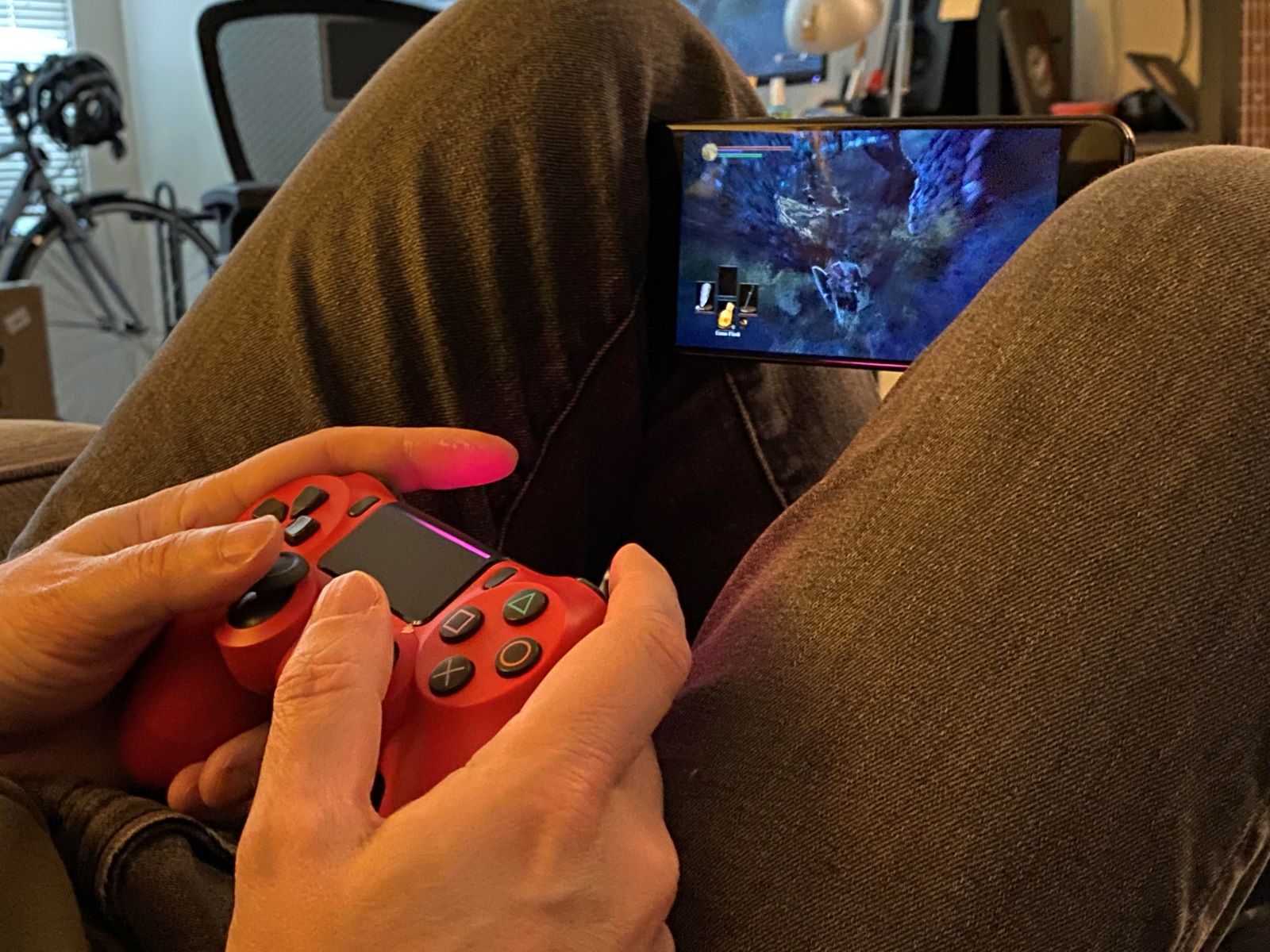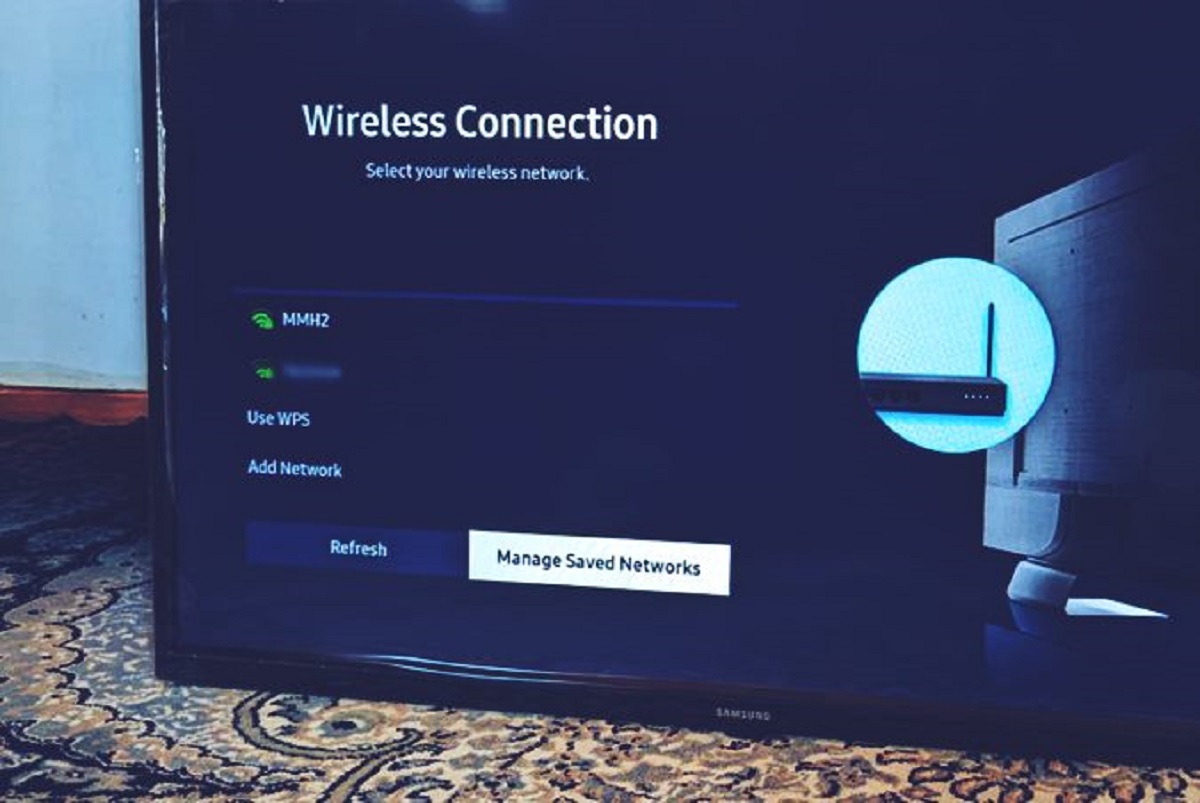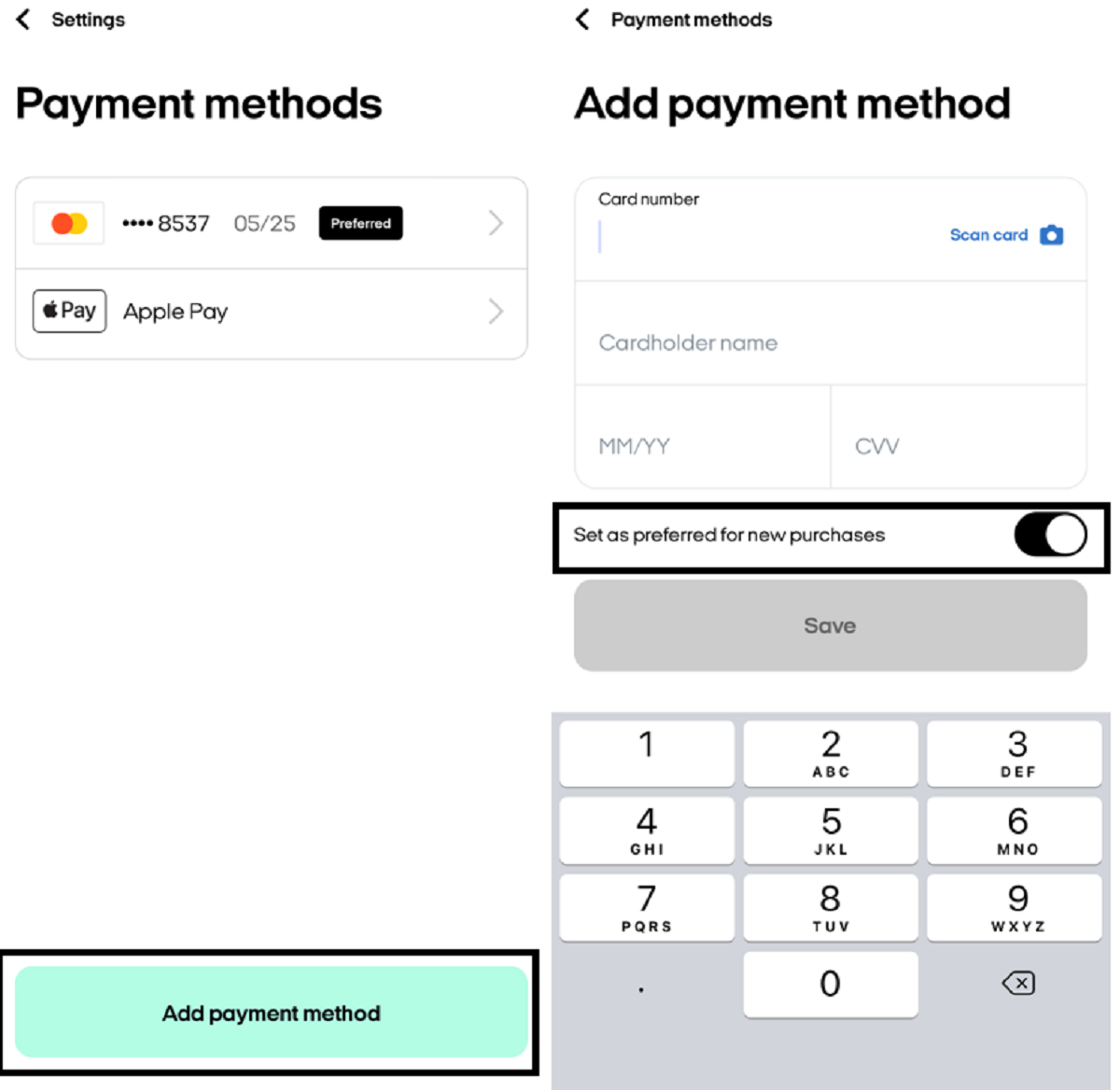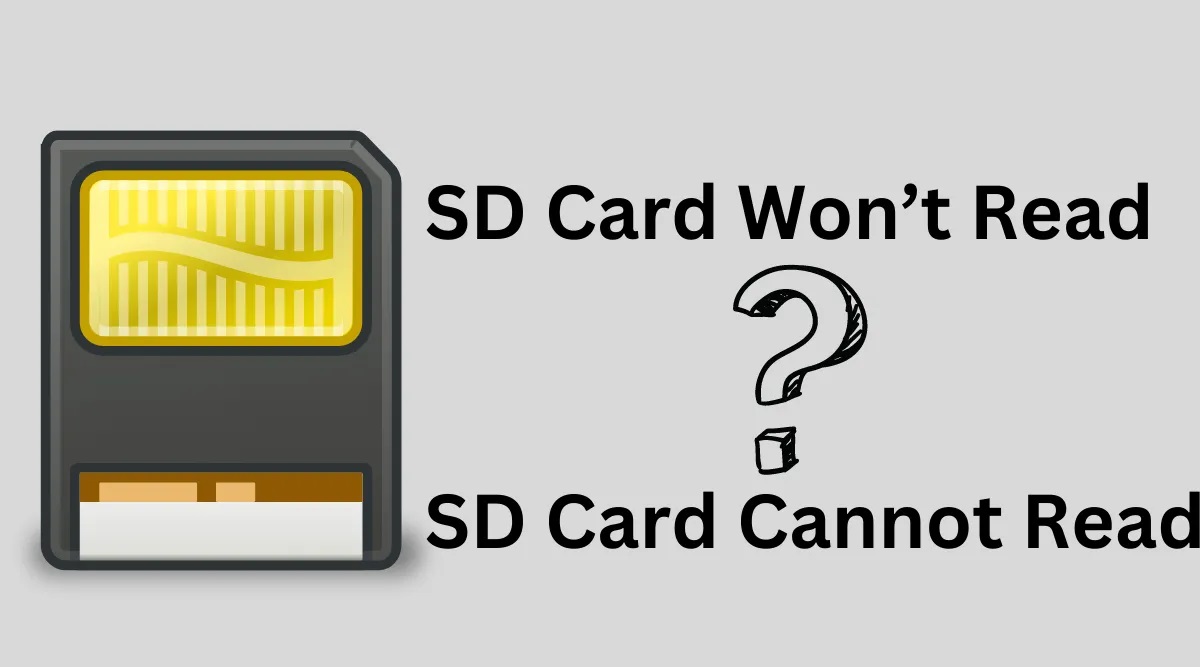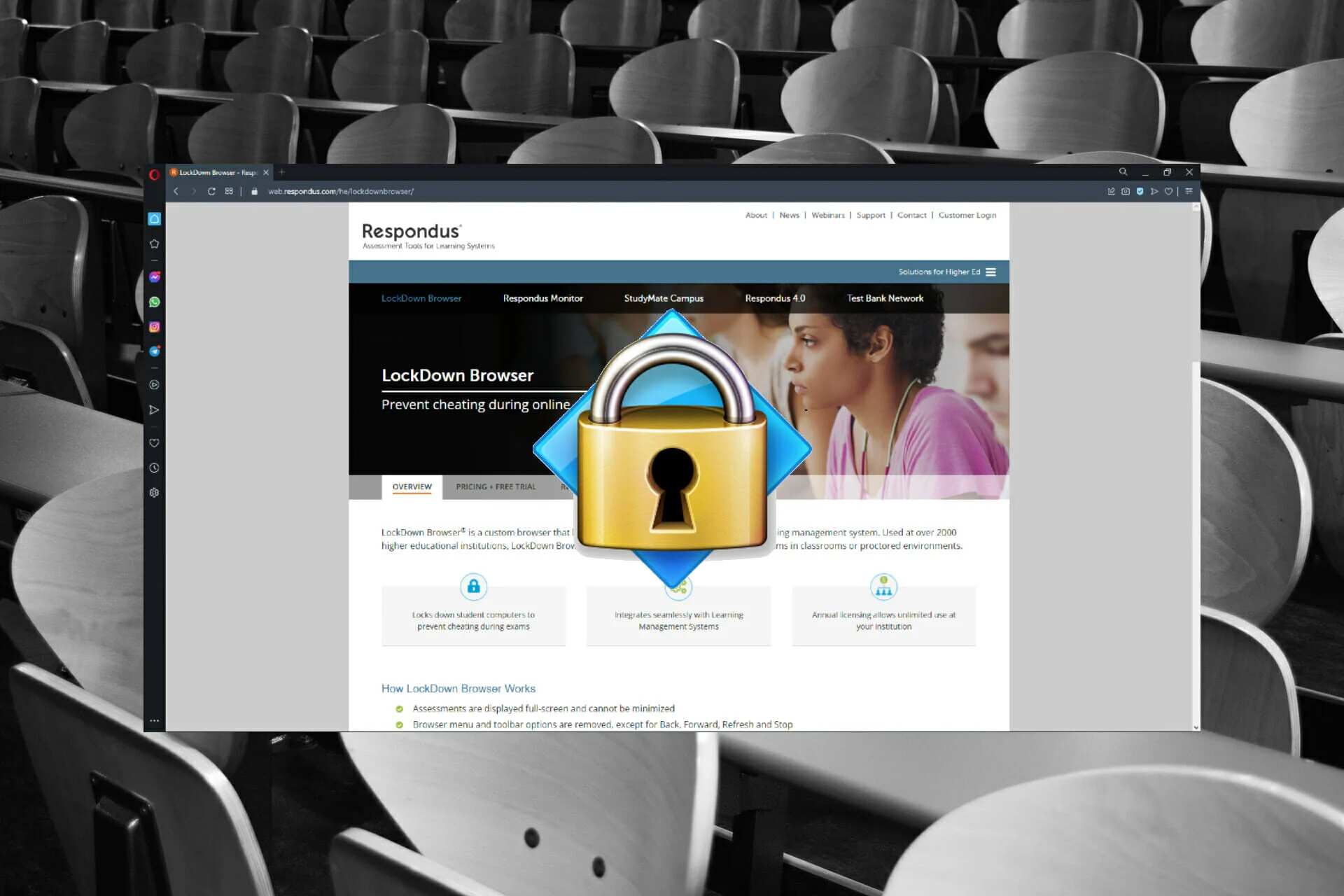Introduction
Having trouble connecting your monitor to your PC? It can be frustrating when your screen remains blank or displays an error message, preventing you from accessing your computer. But fear not, as we’ve got you covered! In this article, we’ll explore the common reasons why your monitor may not be connecting to your PC and provide you with valuable troubleshooting tips to resolve the issue.
A secure and reliable connection between your monitor and PC is crucial for seamless computing. Whether you’re setting up a new system or experiencing unexpected problems, understanding the possible causes and solutions can save you time and frustration.
In the following sections, we’ll delve into various aspects to diagnose and fix the connectivity issue. We’ll start by examining the basics, including checking the cables and adjusting display settings. Next, we’ll explore software-related fixes like updating graphics drivers. If the problem persists, we’ll move on to potential hardware issues, troubleshooting compatibility, and finally, seeking professional help if needed.
Remember, each troubleshooting step will depend on your specific situation, so feel free to skip or focus on the sections most relevant to your needs. With that said, let’s dive in and discover the possible causes behind the monitor connection issues and how to resolve them efficiently.
Understanding the Basics
Before diving into troubleshooting steps, it’s crucial to understand the basics of monitor-to-PC connectivity. At its core, this connection relies on a combination of cables, ports, and settings that allow the transmission of video signals from the PC to the monitor.
Firstly, ensure that both the monitor and the PC are powered on. It may seem obvious, but sometimes a simple oversight can lead to unnecessary frustration. Additionally, check that the cables connecting the monitor to the PC are securely plugged into the respective ports. Common types of ports include VGA, DVI, HDMI, and DisplayPort.
Some monitors may have multiple ports, so make sure you’re plugging the cable into the correct one. If your PC has dedicated graphics, such as an NVIDIA or AMD graphics card, ensure that the cable is connected to the corresponding port on the graphics card, rather than the motherboard’s integrated graphics port.
Next, verify that the monitor is set to the correct input source. Most monitors have an input selection button that allows you to switch between different sources, such as VGA, DVI, HDMI, or DisplayPort. If you’ve connected your PC to the monitor using an HDMI cable, for example, ensure that the monitor’s input source is set to HDMI.
It’s worth mentioning that some monitors require manual configuration to recognize the type of connection being used. Check the monitor’s user manual to see if any specific settings, such as display mode or input type, need to be adjusted for your particular setup.
Another aspect to consider is the screen resolution and refresh rate. If the PC’s output settings are incompatible with the monitor, it can result in a blank screen or display issues. To adjust these settings, right-click on the desktop and select “Display Settings” (Windows) or go to “System Preferences” > “Displays” (macOS). From there, you can select the appropriate resolution and refresh rate supported by your monitor.
Understanding these fundamental aspects of monitor-to-PC connectivity will provide a solid foundation for troubleshooting. Next, we’ll delve into more specific solutions that address cable and connection issues. Let’s jump in and tackle the cables connecting your monitor to your PC!
Checking the Cables
When your monitor fails to connect to your PC, one of the first things to check is the cables. Loose or damaged cables can result in a poor or no connection, causing display problems. Follow these steps to ensure that the cables are properly connected and in good condition:
- Inspect the cables: Carefully examine the cables connecting your monitor to your PC. Look for any visible signs of damage, such as cuts, frayed wires, or bent pins. If you notice any damage, it’s recommended to replace the cable with a new one.
- Ensure secure connections: Disconnect and reconnect the cables on both ends to ensure a secure and snug fit. Sometimes, cables can become loose over time, leading to intermittent or no connection.
- Try a different cable/port: If you suspect a faulty cable, try using a different one to connect your monitor to your PC. For example, if you’re currently using an HDMI cable, switch to a DVI or DisplayPort cable. Similarly, if you have multiple ports on your PC or monitor, test each port to eliminate the possibility of a specific port being the issue.
- Consider cable length: In some cases, using excessively long cables can result in signal attenuation. If you’re using a lengthy cable, try replacing it with a shorter one to see if it improves the connection.
- Verify cable compatibility: Ensure that the cables you’re using are compatible with the ports on your PC and monitor. Different cables have different capabilities, such as supporting specific resolutions or refresh rates. Check the specifications of your devices to confirm compatibility.
By carefully inspecting and manipulating the cables connecting your monitor to your PC, you can eliminate any cable-related issues that may be preventing the connection. If the cables appear to be in good condition and securely connected, it’s time to move on to the next potential solution: adjusting display settings.
Adjusting Display Settings
Incorrect display settings can often be the cause of a monitor-to-PC connection issue. Fortunately, adjusting these settings is a relatively straightforward process that can help resolve the problem. Follow these steps to ensure your display settings are properly configured:
- Access the display settings: Right-click on the desktop and select “Display Settings” (Windows) or go to “System Preferences” > “Displays” (macOS). This will open the display settings window.
- Check resolution and refresh rate: In the display settings window, verify that the resolution and refresh rate are correctly set. The recommended resolution is usually displayed by default, but you can adjust it to match your monitor’s native resolution if needed. Additionally, ensure that the refresh rate is set to the appropriate value, typically 60Hz or higher.
- Try resetting the display settings: If you’ve previously made changes to the display settings and are now experiencing connection issues, consider resetting the settings to their default values. Look for an option labeled “Reset” or “Restore Defaults” in the display settings window and apply the changes.
- Experiment with display modes: Some monitors and graphics cards offer different display modes, such as “Extended Display” or “Duplicate Display.” If you’re using multiple monitors or a laptop connected to an external monitor, try switching between these modes to see if it helps establish a connection.
- Update graphics card drivers: Outdated or incompatible graphics card drivers can potentially cause display issues. Visit the manufacturer’s website or use a third-party software tool to update your graphics card drivers to the latest version. A fresh driver installation may resolve compatibility problems and improve the connection.
By adjusting the display settings, resetting to default values, and updating graphics card drivers, you can troubleshoot and resolve potential software-related issues preventing your monitor from connecting to your PC. If the problem persists, it’s time to explore potential hardware-related problems and implement solutions to address them.
Updating Graphics Drivers
Outdated or incompatible graphics card drivers can often cause issues with your monitor-to-PC connection. Keeping your graphics drivers up to date is essential for optimal performance and compatibility. Follow these steps to update your graphics drivers:
- Identify your graphics card: Determine the make and model of your graphics card. You can usually find this information in the device manager or by referring to the documentation that came with your PC or graphics card.
- Visit the manufacturer’s website: Go to the website of your graphics card manufacturer (such as NVIDIA, AMD, or Intel) and navigate to the support or drivers section.
- Download the latest drivers: Locate the appropriate drivers for your graphics card model and operating system. Download the latest version of the drivers, making sure to select the correct options for your specific setup.
- Install the drivers: Once the drivers are downloaded, run the installer and follow the on-screen instructions to complete the installation process. Restart your PC if prompted.
- Verify driver installation: Check the device manager or the graphics card control panel to ensure that the new drivers have been successfully installed and are recognized by your system.
- Perform a clean installation (optional): If you’re experiencing persistent issues even after updating the drivers, you may consider performing a clean installation. This involves uninstalling the existing drivers completely before installing the latest version. Consult the graphics card manufacturer’s documentation or support resources for instructions on performing a clean installation.
Updating your graphics drivers can often resolve compatibility problems and improve the connection between your monitor and PC. It’s worth noting that some graphics cards may have automated software programs that can help you easily update the drivers. Check if your graphics card manufacturer provides such software for a more streamlined update process.
If the issue with your monitor connection persists even after updating the graphics drivers, it’s time to explore potential hardware-related problems and implement solutions to address them. We’ll discuss these issues further in the following sections, so keep reading to find the appropriate resolution for your specific situation.
Resolving Hardware Issues
If you’ve checked and adjusted the cables, and updated the graphics drivers, but are still unable to establish a connection between your monitor and PC, it’s time to investigate potential hardware issues. Here are some steps you can take to troubleshoot and resolve hardware-related problems:
- Test with a different monitor: Connect your PC to a different monitor or a TV to see if the issue persists. If the alternate display functions properly, it indicates a problem with your original monitor. Consider contacting the manufacturer for further assistance or repair options.
- Try a different graphics card: If you have access to another graphics card, swap it with your current one to see if the issue lies with the graphics card itself. If the replacement card works fine, it may be time to replace or upgrade your existing graphics card.
- Check the power supply: Ensure that your PC and monitor are receiving adequate power. Verify that all power cables are securely plugged in and that the power outlets are functioning correctly. Faulty power supply units or power fluctuations can potentially cause connectivity issues.
- Inspect the ports: Carefully examine the ports on both the monitor and the PC for any signs of damage or bent pins. If you notice any issues, it may be necessary to replace the affected port or seek professional repair.
- Consider hardware compatibility: In some cases, certain hardware combinations may not be fully compatible. Verify that your monitor and graphics card are compatible with each other in terms of resolution, refresh rate, and connection type. Consulting the user manuals or contacting the manufacturers can provide valuable insights into compatibility issues.
Resolving hardware-related problems can be more complex and may require professional assistance or component replacements. If you’re not familiar with hardware troubleshooting or if these steps don’t lead to a satisfactory resolution, it’s advisable to seek help from a competent technician or contact the respective manufacturers for further guidance.
By investigating possible hardware issues and implementing the appropriate solutions, you can potentially resolve the problem preventing your monitor from connecting to your PC. However, if you’re still experiencing difficulties, don’t worry – there are additional steps you can take to troubleshoot compatibility issues, as we’ll discuss in the next section.
Troubleshooting Hardware Compatibility
Sometimes, monitor-to-PC connection issues can arise due to compatibility conflicts between different hardware components. If you suspect compatibility problems, here are some steps you can take to troubleshoot and resolve them:
- Check resolution and refresh rate compatibility: Verify that both your monitor and graphics card support the same resolution and refresh rate. Mismatched settings can lead to connection problems or display issues. Adjust the display settings on your PC to match the native resolution and refresh rate of your monitor to ensure compatibility.
- Test with a different cable: As we mentioned earlier when checking the cables, using a different cable (preferably of a different type) can help determine if the issue is related to compatibility between the cable and the ports on your monitor and PC. For example, if you’re currently using an HDMI cable, try switching to a DisplayPort or DVI cable to see if it improves the connection.
- Update firmware: Some monitors, particularly those with advanced features, may require firmware updates to enhance compatibility with newer hardware. Check the manufacturer’s website for any available firmware updates and follow their instructions to update your monitor’s firmware if necessary.
- Consider a hardware adapter: If your monitor and PC have different types of ports that don’t directly match, such as HDMI and VGA, you may need to use a hardware adapter to bridge the compatibility gap. These adapters convert the signal from one port type to another, enabling a proper connection.
- Consult the manufacturer: If you suspect compatibility issues between your monitor and PC, reach out to the manufacturers for assistance. They may be able to provide specific recommendations or firmware updates to resolve the compatibility problems.
By troubleshooting hardware compatibility and implementing the recommended solutions, you can potentially overcome any issues preventing a successful monitor-to-PC connection. Remember to consult manufacturer documentation, support resources, or seek professional advice if needed. Sometimes, an expert opinion can provide valuable insights or alternative solutions to address compatibility conflicts.
If none of the hardware compatibility troubleshooting steps resolve the issue, it may be time to consider seeking professional help. Let’s explore this option in the next section and discuss when it’s appropriate to involve experts.
Seeking Professional Help
If you’ve exhausted all the troubleshooting steps mentioned earlier and are still unable to establish a connection between your monitor and PC, it may be time to seek professional assistance. Here are a few situations where involving experts can be beneficial:
- Complex hardware issues: If you’re not familiar with hardware repairs or troubleshooting, it’s best to consult a professional technician. They have the expertise and tools to diagnose and repair intricate hardware problems that may be causing the monitor connection issue.
- Warranty or support: If your monitor or PC is still under warranty, it’s a good idea to contact the respective manufacturer’s support team. They can provide guidance and troubleshooting specific to their products, and if necessary, facilitate repairs or replacements covered by the warranty.
- Specialized knowledge: In some cases, the nature of the connection issue may require specialized knowledge or expertise. Professional assistance can be invaluable when dealing with advanced monitor technologies, complicated software configurations, or rare compatibility problems.
- Replacement or upgrade: If it’s determined that the monitor or graphics card needs to be replaced or upgraded, consulting experts can help you choose the right hardware for your needs. They can provide recommendations based on compatibility, performance, and budget requirements, ensuring a smooth transition and improved connectivity.
Remember that involving professionals doesn’t necessarily mean you’ve failed in troubleshooting the issue yourself. Sometimes, certain problems require specialized knowledge or advanced tools to be effectively resolved.
Before seeking professional help, make sure to gather relevant information about the issue, such as the steps you’ve taken, error messages encountered, and the specifications of your monitor and PC. Providing this information can assist the professionals in diagnosing the problem more efficiently.
By involving experts or contacting the manufacturer’s support team, you can receive personalized assistance and guidance tailored to your specific situation. They can provide additional troubleshooting steps, repair services, or recommendations for further action.
In the following section, we’ll summarize the key points discussed in this article, bringing together the troubleshooting steps and highlighting the importance of systematic problem-solving when faced with monitor-to-PC connection issues.
Conclusion
Connecting your monitor to your PC is essential for smooth computing, but encountering issues along the way can be frustrating. However, by systematically troubleshooting and addressing the potential causes, you can overcome these problems and establish a successful connection.
In this article, we explored the basics of monitor-to-PC connectivity, covering the importance of securely connecting cables, verifying display settings, and updating graphics drivers. We then delved into troubleshooting hardware-related issues and resolving compatibility conflicts.
Checking the cables for damage and secure connections, adjusting display settings to match your monitor’s specifications, and updating graphics drivers are crucial steps in resolving connection issues. If the problem persists, investigating potential hardware problems and compatibility conflicts is essential. Additionally, seeking professional help can provide expert guidance and assistance when needed.
Remember to gather relevant information and approach the troubleshooting process with patience and a systematic mindset. Each step offers valuable insights to pinpoint the root cause of the issue and take appropriate action.
By following the guidance in this article, you’ll be well-equipped to troubleshoot monitor-to-PC connection issues effectively. Ultimately, the goal is to ensure a stable and reliable connection, allowing you to enjoy uninterrupted productivity and immersive multimedia experiences.







